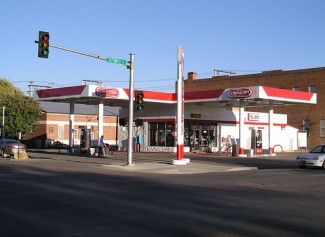Serial Port Pit Bull
by in Feature Articles on 2009-04-30 Shawn G. couldn't believe his eyes. A support ticket had just come in about a user who was having a problem with a DOS-based computer with a 286 processor!? Fresh out of college, Shaw was more used to working with PCs running Windows XP, and processor speeds and RAM amounts in the multi-"giga" ranges. Much to his surprise, he was getting ready to help a user with the equivalent of 1985's cutting-edge top model. Expecting the real problem to be a bug in their help desk software mis-reporting PC's default specs, Shawn gave the user a ring.
Shawn G. couldn't believe his eyes. A support ticket had just come in about a user who was having a problem with a DOS-based computer with a 286 processor!? Fresh out of college, Shaw was more used to working with PCs running Windows XP, and processor speeds and RAM amounts in the multi-"giga" ranges. Much to his surprise, he was getting ready to help a user with the equivalent of 1985's cutting-edge top model. Expecting the real problem to be a bug in their help desk software mis-reporting PC's default specs, Shawn gave the user a ring.
It turned out that yes indeed, the computer in question was based on the ancient yet venerable, 286 processor. But the kicker was that the PC wasn't a PC at all. Instead, it was a very expensive, mission critical, ruggedized "beige box" that was used by the engineers to calculate the efficiency of heat transfer for some very large and noisy piece of plant machinery. Despite feeling a little bit out of his element, Shawn figured he'd give a shot at troubleshooting and asked for a description of the problem.


 Mar 09
Mar 09
 The Sohcnum Family Convenience store chain knew two things about their fax-based price distribution process: it was extremely time consuming and completely un-cool. Managers at their twenty-eight locations absolutely hated having to write out, by hand and with a big marker, the hundreds of new price signs that came through every morning. It all seemed so unnecessary, especially considering that it was 1997 and "hi tech" was officially in. Plus, with their aspirations to grow the chain by impressing and attracting big investors, a whiz-bang price distribution system was a must-have.
The Sohcnum Family Convenience store chain knew two things about their fax-based price distribution process: it was extremely time consuming and completely un-cool. Managers at their twenty-eight locations absolutely hated having to write out, by hand and with a big marker, the hundreds of new price signs that came through every morning. It all seemed so unnecessary, especially considering that it was 1997 and "hi tech" was officially in. Plus, with their aspirations to grow the chain by impressing and attracting big investors, a whiz-bang price distribution system was a must-have.